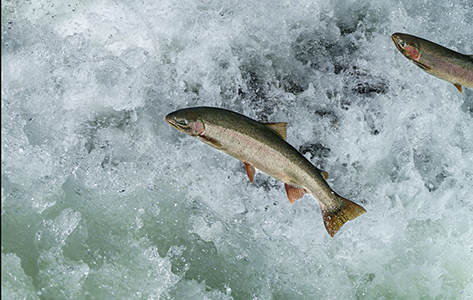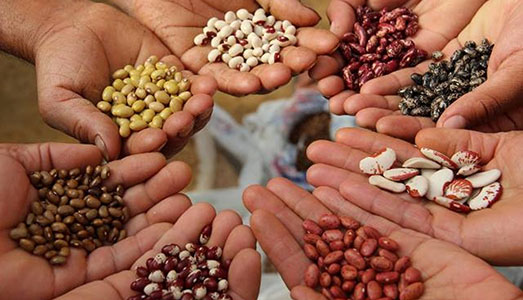While the Orcas Center rocks with the raw and refined talents of the nine contestants in Orcas Idol this Saturday, behind the scenes the Orcas Island Prevention Partnership (OIPP), a Community Coalition, is fulfilling its mission to support and promote safe and healthy lifestyles.
The community members of OIPP Community Coalition are constantly and, more often than not, quietly working to bring “creative, respectful and productive” experiences to the community. To that end, OIPP is planning a survey for Orcas Middle and High School Students following the 44th Super Bowl on Sunday, to rate the ads that are as much of a draw as the sports event for television watchers.
OIPP members come from school, health, church, business, mental health, youth, and senior organizations and non-profits. Through collective advocacy for prevention issues, the OIPP Community Coalition strives to fulfill its mission “to support a safe a healthy community in which youth and adults may live creative, respectful, and productive lives free of substance abuse.”
The “Orcas Idol” show began five years ago, piggy-backing on the popularity of the “American Idol” television show to promote the OIPP message.
Previous “Idols” have been Jenole Peacock, Jason Kraayeveldt, Locket Goodrich, and Pamela Wright.Entertainment-hungry islanders crowd the Orcas Center for the February show on the Orcas Center’s mainstage, and the Madrona Room is opened for overflow crowds to watch the proceedings on a video feed.
The Orcas Idol committee members help the contestants choose music and prepare for the Idol auditions (at which a Junior Orcas Idol is chosen: in years past they have been Jules Mann, Thika Zbornik and Jessica Gudgell; this year, they are Emmy and Lisa Carter) and for the competition’s finale.
All the proceeds raised by Orcas Idol stay on Orcas Island to enable OIPP Community Coalition work.
Orcas Idol may be the glamor girl of OIPP promotions, but the 13 partners who work together in OIPP Community Coalition also create, organize and promote:
- The Natural Helpers Group of Peer Support in the 6th-8th grades
- Teen Tutoring that matches High School tutors with Orcas Island Elementary School students
- 5th and 6th grade Teach-In held in cooperation with Camp Orkila
- Orcas Parents Encouraging Network phone tree, identified by asterisks in the school directory that helps parents network to set clear rules and provide supervision
- Funhouse Mentoring by adult community members
- Point Blank teen leadership club
- Community Mindfulness forums
- Active Parenting Classes in cooperation with the Readiness to Learn progam
- Life Skills and Second Step classes, offered in the Orcas Island School District Elementary and Middle Schools
OIPP Community Coalition Director Marta Nielson says, “By collaborating with both county and state agencies, the coalition members and Partners are committed to helping ‘weave the safety net.’ Recognizing that reducing stress and trauma, substance abuse and violence are necessary for a healthy community, the Coalition Partners help by providing intervention, education, running programs for youth and parents, sharing information and mobilizing the community.”
New this year, OIPP has arranged for students in the 6th through 12th grades at Orcas public schools to take a short survey of the Super Bowl commercials. (The National Football League’s Super Bowl XLIV is scheduled for Sunday, February 7, 2010, with television coverage on CBS.)
The survey is prepared by the Drug-Free Action Alliance, and distributed nationwide. Orcas middle and high school students will have the opportunity to share their thoughts on what advertisements they remember seeing and which commercial takes their top vote.
Ads lasting 30 seconds and costing $3 million each will push products from McDonalds, Budweiser, Doritos, Boost mobile and internet sites godaddy.com, careerbuilder.com and homeaway.com, among others.
Statistics from the Drug-Free Action Alliance show:
- Approximately 98.7 million Americans watched the 2009 Super Bowl, making it the largest viewed television event ever;
- About 17.7 million American youth (under 21) were among those viewers;
- The number one most liked and most recalled commercial was a beer ad, featuring a Budweiser Clydesdale competing with a Dalmation in a game of fetch;
- AnheuserBusch also produced the three most recalled ads last year, and took the title as“top advertiser” with more commercial time than any other advertiser;
The Drug-Free Action Alliance gives statistics establishing that:
Alcohol is the Leading Drug Problem Among Youth (Source: 2008 NSDUH: National Findings): There are approximately 10.7 million underage drinkers in the United States.
Alcohol is Associated with Risky Behavior (Source: The Surgeon General’s Call to Action to Prevent and Reduce Underage Drinking, 2007):
- Annually, about 5,000 people under 21 die from alcohol related injuries.
- An estimated 7.2 % of 16 or 17 year olds and 16.7 % of 18 to 20 year olds reported driving under the influence of alcohol in the past year. (Source: 2008 NSDUH: National Findings)
- Underage drinking plays significant role in increased sexual behavior, including unwanted, unintended and unprotected sexual activity, and sex with multiple partners
- Teen girls who binge drink are 63% more likely to get pregnant while in their teen years. (Source: National Institute on Alcohol Abuse and Alcoholism)
To take part in the Super Bowl ad survey, go to Drug-Free Action Alliance Super Bowl Survey 2010
Current:
Our mission is to support a safe a healthy community in which youth and adults may live creative, respectful, and productive lives free of substance abuse.
Goal One: to strengthen and to sustain community efforts to reduce substance abuse among youth by promoting and enhancing collaboration between families, schools, community service organizations, federal, state, and county government organizations by:
•Increasing community participation in prevention activities;
•Enhancing prevention capacity through increased organizational structure, leadership development and funding.
Goal Two: to reduce substance abuse among youth by addressing factors that place Orcas youths at risk for substance abuse, and increase those protective factors which strengthen youth and community. To achieve these goals, OIPP will coordinate and implement multiple strategies across the four domains of community, family, school, and peers.
Goal Three: to reduce substance abuse over time. This will be accomplished by collaborating between community and family domains.
OIPP is planning a short survey on Monday February 8th following the Super Bowl. The survey will go to students in 6th – 12th grade.
This is a part of what was sent home to parents in the newsletter:
“The Drug Free Alliance Super Bowl Survey 2010, is a simple, three-question, student survey given on the Monday morning following the Super Bowl. Joining with other schools nationwide, Orcas middle and high school students will have an opportunity to share their thoughts on what advertisements they remember seeing and which commercial takes their top vote. This information is then collected, summarized and shared with participating communities. This valuable, fresh and local information can help guide the Prevention Coalition in developing ways to help educate parents, students, lawmakers and the media about the effects of alcohol advertising on our youth.”
The Super Bowl is known for its commercials almost as much as it is for the game itself. Yet the type of products being advertised and the audience viewing those advertisements are of great concern. Results from the Drug-Free Action Alliance Super Bowl Survey 2009 revealed that two of the top three “most memorable” commercials, according to middle and high school students, were beer commercials. This falls in line with the studies that suggest alcohol companies are targeting youth in their advertising. Through research, we know that the more youth are exposed to alcohol in advertising, the more likely they are to consume alcohol underage.
In our quest to further research the impact of advertising on our youth, we invite you to participate in the Drug-Free Action Alliance Super Bowl Survey 2010.
Through a simple, three-question, student survey given Monday morning following the Super Bowl, middle and high school students share their thoughts on what advertisements they remember seeing and which commercial takes their top vote. This information is then collected, summarized and shared. You’ll see the results within several days post Super Bowl Sunday. This valuable, fresh and local information can then be used to educate parents, students, lawmakers and the media about the effects of alcohol advertising on youth.
In the Super Bowl Survey Kit , Drug-Free Action Alliance includes everything you’ll need to quickly and easily implement your local student survey, with additional ideas on student engagement and follow-up activities.
The National Football League’s Super Bowl XLIV is scheduled for February 7, 2010, with television coverage on CBS. Make the winning pass by taking advantage of this opportunity to get in the game!
If you have any Super Bowl Survey questions, please contact: Drug-Free Action Alliance Communications Director
2009 Super Bowl Stats (Source: The Nielsen Company):
· Approximately 98.7 million Americans (151.6 million worldwide) watched the 2009
Super Bowl making it the largest viewed television event ever.
· About 17.7 million American youth (under 21) were among those viewers.
· The number one mostliked
and mostrecalled
commercial was a beer ad, featuring a
Budweiser Clydesdale competing with a Dalmation in a game of fetch.
· AnheuserBusch
also produced the three most recalled ads last year, and took the title as
“top advertiser” with more commercial time than any other advertiser.
6
Alcohol is the Leading Drug Problem Among Youth (Source: 2008 NSDUH: National Findings):
· Alcohol is the leading drug problem among youth
· There are approximately 10.7 million underage drinkers in the United States.
· Nearly 8,000 youths drink alcohol for the first time each day (Source: Join Together, Nov. 2007)
· Nearly 6.6 million (17.4%) underage drinkers are considered binge drinkers and more than 2.1
million (5.5 %) are classified as heavy drinkers.
NOTE: *Binge is defined as five or more drinks on an occasion. Heavy Drinking is defined as five or more
drinks on an occasion on five or more of the past 30 days.
Alcohol is Associated with Risky Behavior (Source: The Surgeon General’s Call to Action to
Prevent and Reduce Underage Drinking, 2007):
· Underage drinking is the leading contributor of death from injuries. Annually, about 5,000 people
under 21 die from alcoholrelated
injuries.
· An estimated 7.2 % of 16 or 17 year olds and 16.7 % of 18 to 20 year olds reported driving under
the influence of alcohol in the past year. (Source: 2008 NSDUH: National Findings)
· Underage drinking plays significant role in increased sexual behavior, including unwanted,
unintended and unprotected sexual activity, and sex with multiple partners
· Teen girls who binge drink are 63% more likely to get pregnant while in their teen years. (Source:
National Institute on Alcohol Abuse and Alcoholism)
· Alcohol use by youths has been linked to delinquent behaviors, including stealing, illicit drug use
and problems at home and at school
The Consequences of Underage Drinking are Real and Tragic (Source: National Center for
Chronic Disease Prevention and Health Promotion, Aug. 2008):
· Youth who drink alcohol are more likely to experience physical problems including hangovers,
illness and alcohol poisoning, memory problems, disruption of normal growth and sexual
development, among others negative effects.
· Research shows that heavy alcohol use by adolescents has longterm
effects on brain
development (Source: Alcoholism: Clinical and Experimental Research: Vol. 24, Number 2,
National Institute on Alcohol Abuse and Alcoholism, Feb. 2000)
· Youth who begin drinking before age 15 are five times more likely to develop alcohol
dependence or abuse alcohol later in life, than those who begin drinking at or after age 21.
More information can be found at the following
**If you are reading theOrcasonian for free, thank your fellow islanders. If you would like to support theOrcasonian CLICK HERE to set your modestly-priced, voluntary subscription. Otherwise, no worries; we’re happy to share with you.**








